709-218-7927 The Landfall Garden House 60 Canon Bayley Road Bonavista, Newfoundland CANADA A0C 1B0 |
|---|
Dropped Rack
Starting at “Monday, August 15, 2022” you will find notes on my initial dropped-rack (at the time I called it a percussion sieve and was ambitious about devoting the design and development of a wind turbine geared down to drive a Cammed rack!)
See Archive for a long narrative of 2022 and 2023.
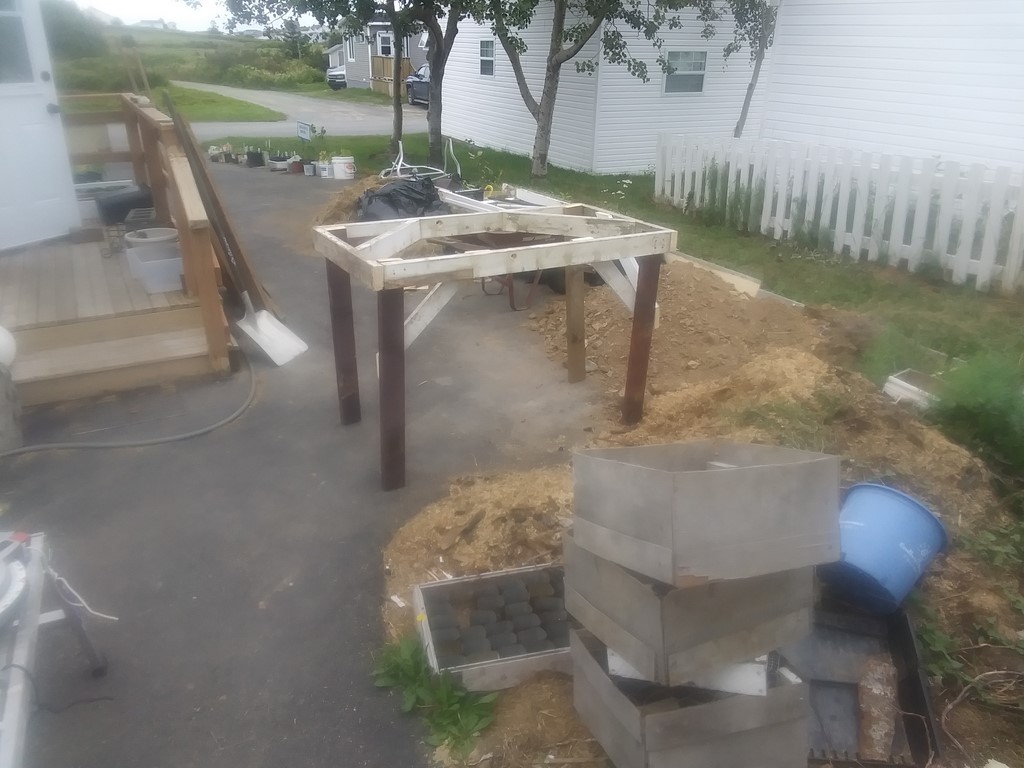
The image titled “The table, somewhat braced, ready for its first trial.” Is representative of a table for any table-mounted rack (Dropped, Vibrating, or Cammed). If I play my cards right, one table will accommodate all three types of rack.

This is the setup I used throughout 2022 and 2023. The racks (I made three) were interchangeable. Each rack had holes drilled at each end for the handle and the pivot.
I operated the rack by lifting and dropping the handle end of the rack up to twenty times per load of about three shovels of dry soil.
I could use these three racks as vibrating racks, suspending them by tension springs or by cord taken through those four drilled holes.
Tuesday, March 12, 2024
This particular rack has a flaw.
Maximum vertical movement occurs at the handle end. The left-hand side in the image.
Minimum vertical movement occurs at the pivot end. The right-hand side in the image.
Since my rack or mat ends at the pivot point, there is almost no vertical movement at all as coarse material descends from left to right.
In consequence the coarse material tends to hang around at the pivot point like a bunch of teenagers in the mall late Saturday afternoon, failing to fall off the end of the sieve.
What would you do to rectify this design flaw?
Friday, April 12, 2024
The last hummock north end of the shed has a pile of rubble from earlier screenings. I don’t want to lug rocks from this patch to the raised bed, only to have to lug them after screening them again. Answer: fix the design flaw in the dropped rack and screen them on the bitumen at the end of the driveway. This worked!

I screw two uprights to the frame; only two of the four screws are in place; let’s see if this works at all.
I drilled out one-inch diameter holes to take the pivot rod at different heights, which will give me different gradients according to the rack gauge and the material (damp, dry, bark etc.)
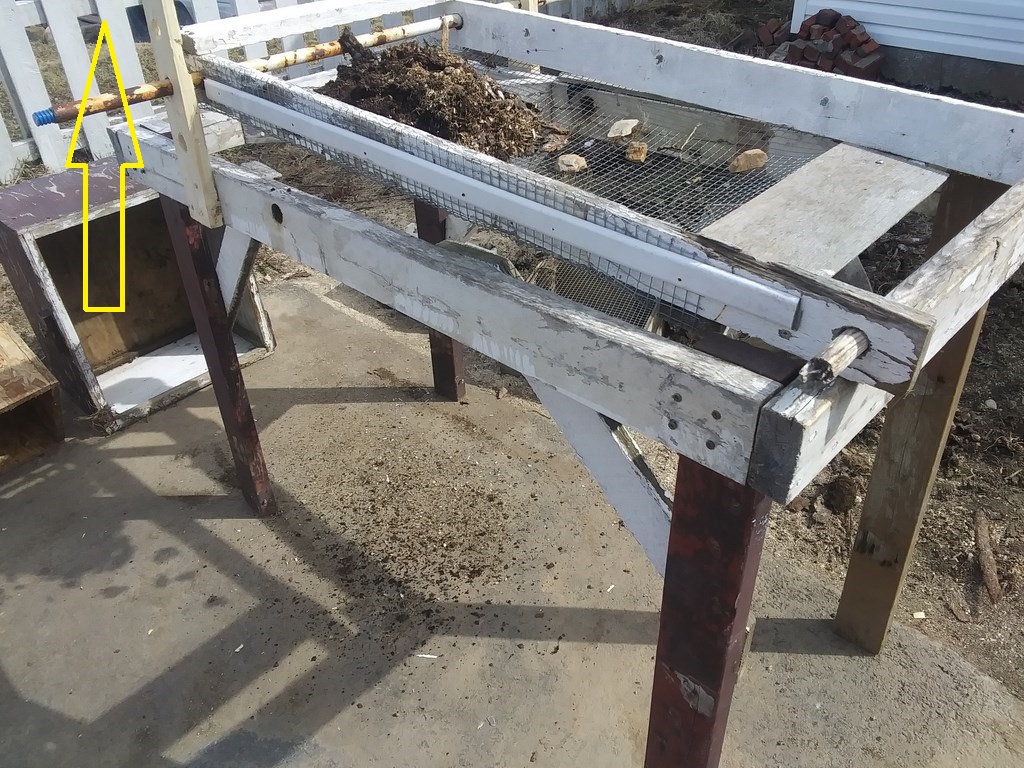
The pivot rod is mounted on the second hole from the bottom; later I passed it through the top hole to give a steeper gradient.
The first shovel of material is tossed onto the rack, a fine film forms under the rack, the result of the impact on the rack.

The first shovel is passed through. Looking good. From now on I tossed three or four shovels at a time.
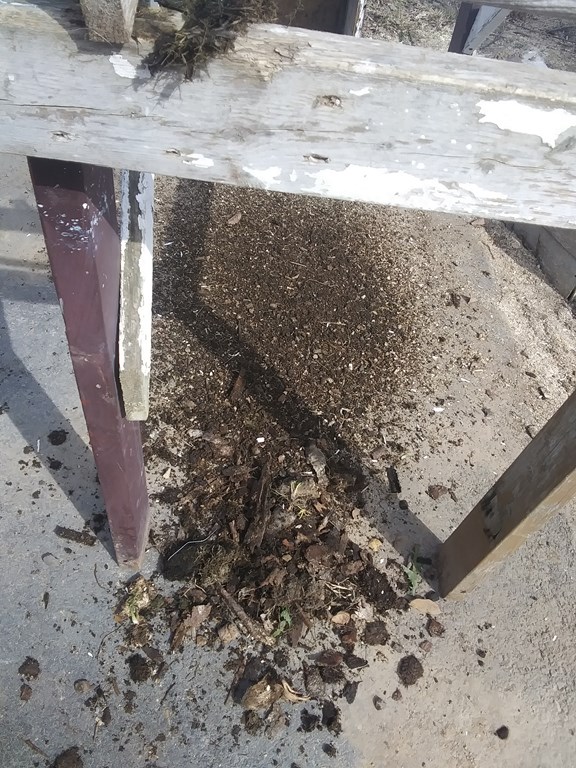
Bark falls off the end at which the operator stands; use old gardening shoes.
Of course now there is little movement at the top or pivot end. A vibrating rack should be better, providing that the entire rack is vibrated, and not just the upper or lower end.
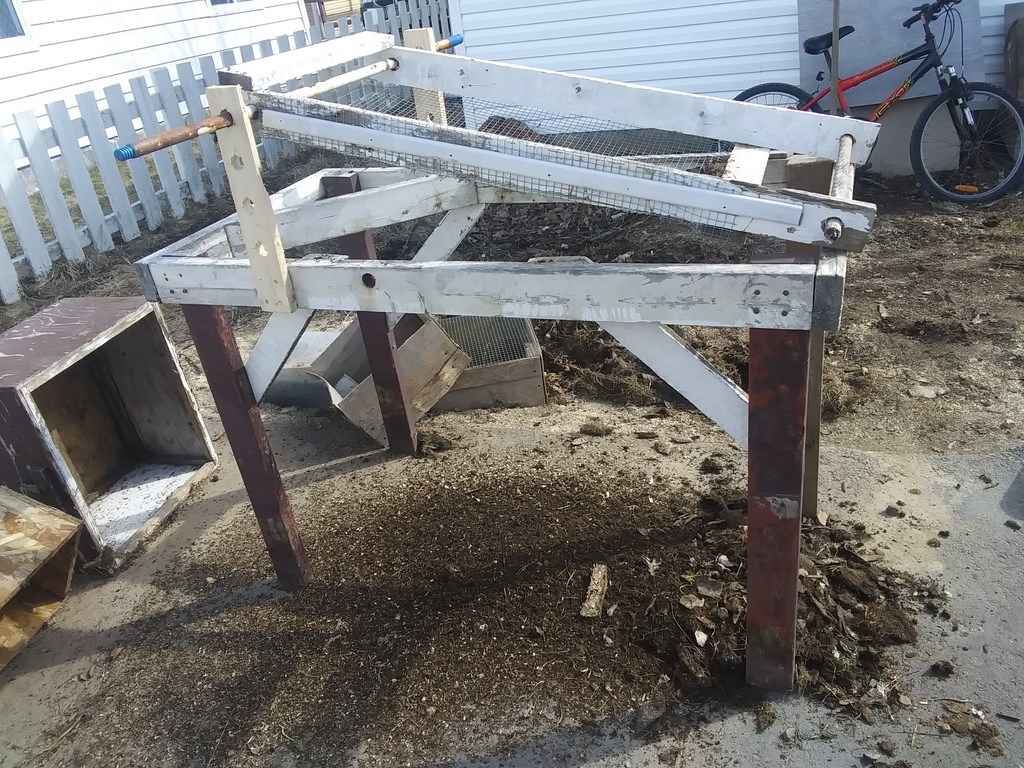
On problem I had was height; tossing a shovel to land ON the rack can result in material passing right over the rack. I soon learned.
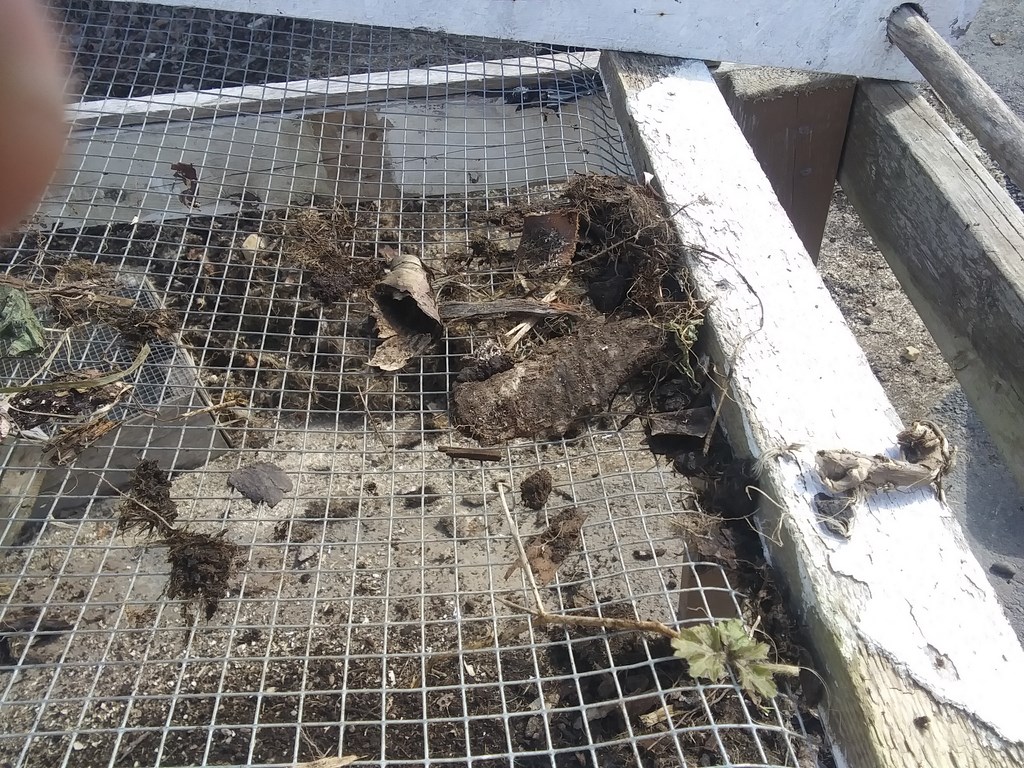
The bark collects at the downward, operator end because I passed the mesh through the frame (sandwiched).
I might rebuild all three racks so that a gap exists between the lower part of the frame and the ground. In this way material can roll out of the rack and not form a logjam at this lower end.
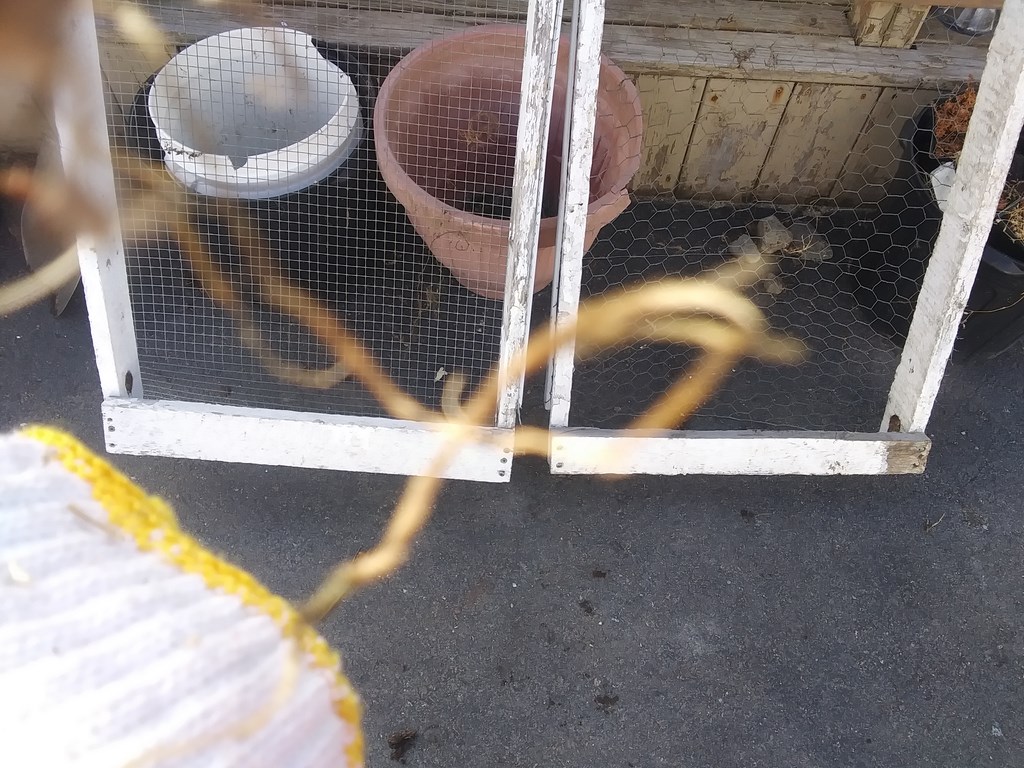
I switched to a coarser one-inch chicken wire towards the end.
It is worth trying all racks for any homogenous pile of material to find the best fit to reduce labour – in this case, banging the rack up and down.
Note that this years model – one rack with interchangeable racks - is superior to different racks with the mesh sandwiched in.
I live and learn.
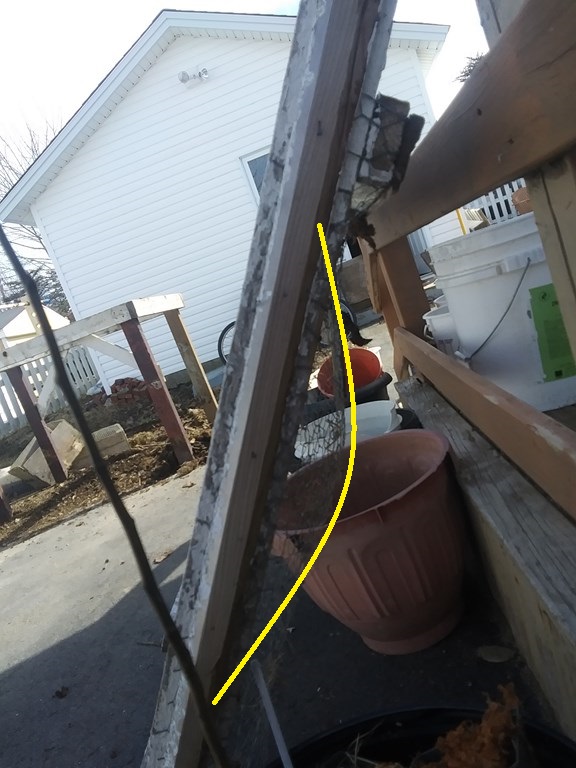
Note the sag in the one-inch chicken wire; coarse material pools in this sag. I can’t think of a reason to have such a sag, unless the aim is to have NO material escape the mesh without being handled out of the mesh.
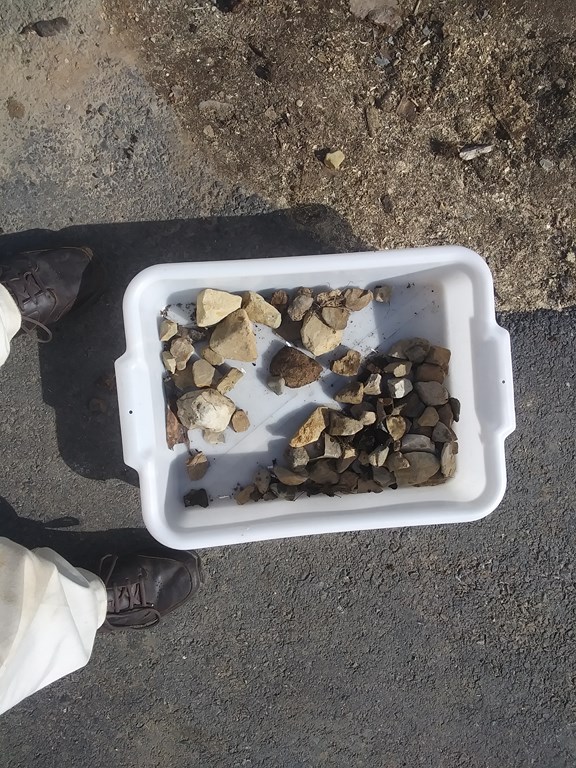
The rocks collected from this afternoons half-hour of actual sieving. These rocks can be dumped on the rockery.
The objectives today were manifold. In part to pre-sieve material known to be reject-grade; to see if the dropped rack had any use (yes, for small interim jobs); to implement corrections to known flaws. To think of further improvements.
In many ways this small dropped rack is more easily ported than the initial propped rack.
NEXT: The end legs need to be braced to prevent them splaying. Too, a galvanised iron chute to divert good soil from rejects should be re-installed.